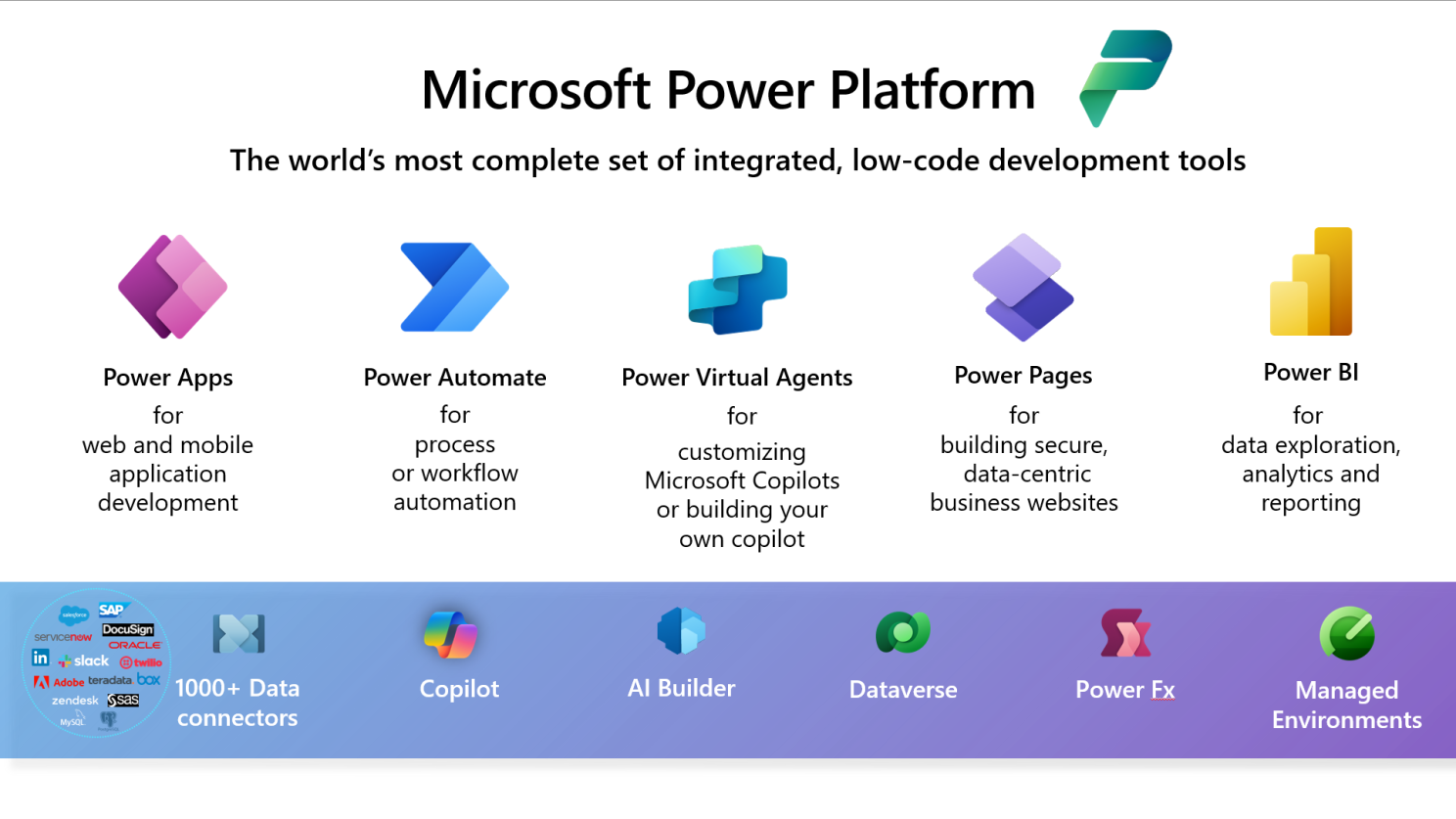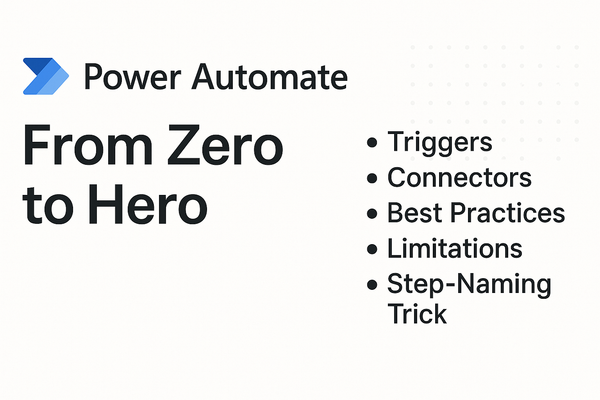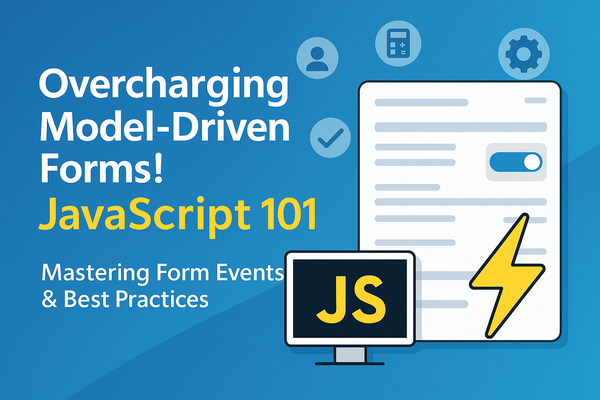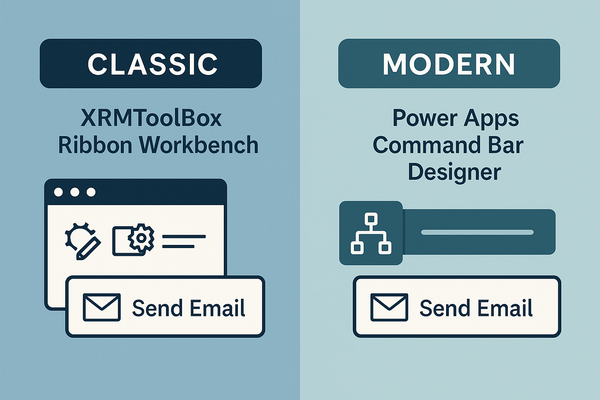Why Power Platform is Perfect for Non-Technical Users: Breaking Down the Low-Code Advantage

The Power Platform has revolutionized how non-technical users approach business solutions, making app development and process automation accessible to everyone. Let's explore why this platform is particularly well-suited for those without traditional coding backgrounds.
What Makes Power Platform Different?
Visual Development Environment
The platform's intuitive drag-and-drop interface eliminates the need for complex coding. Users can create professional applications by simply selecting, dragging, and configuring pre-built components. Think of it as building with digital LEGO blocks – you don't need to understand how each block is made to create something amazing.
Pre-built Templates
Microsoft provides numerous ready-to-use templates that serve as starting points for common business scenarios. These templates can be customized without diving into complex configurations, allowing users to:
- Track inventory
- Manage customer relationships
- Schedule appointments
- Handle employee requests
Key Benefits for Non-Technical Users
Rapid Development
Gone are the days of waiting months for IT to develop solutions. With Power Platform, you can create functional applications in hours or days rather than weeks or months.
Familiar Interface
If you're comfortable with Microsoft Office, you'll feel right at home. The platform uses familiar concepts and integrates seamlessly with Office 365 applications like Excel, Outlook, and SharePoint.
Cost-Effective Solutions
By enabling citizen developers, organizations can:
- Reduce dependency on external developers
- Lower development costs
- Implement solutions faster
- Iterate and improve based on immediate feedback
Real-World Applications
Business Process Automation
Consider a simple approval process. Instead of managing it through emails, a non-technical user can create a Power Automate flow that:
- Captures form submissions
- Routes them to appropriate approvers
- Sends automatic notifications
- Updates relevant SharePoint lists
Data Collection and Analysis
Creating surveys, inspection forms, or data collection apps becomes straightforward with:
- Custom forms
- Automated data validation
- Real-time reporting
- Mobile accessibility
Getting Started Tips
Start Small
Begin with simple projects like:
- Converting a paper form to digital
- Automating repetitive email tasks
- Creating basic data collection apps
Leverage Learning Resources
Microsoft provides extensive free learning materials:
- Microsoft Learn modules
- Guided tutorials
- Community forums
- Video training
Common Concerns Addressed
Data Security
Power Platform includes robust security features that ensure:
- Data remains protected
- Access is properly controlled
- Compliance requirements are met
Scalability
As your solutions grow, Power Platform grows with you:
- Start with basic apps
- Add complexity gradually
- Integrate with other systems
- Expand to enterprise-scale solutions
Power Platform. What is it made of?
The Microsoft Power Platform consists of five core components that work together to create comprehensive business solutions:

Power Apps
Power Apps enables users to build custom business applications with a drag-and-drop interface. It offers two main types of apps:
- Canvas apps for highly customized interfaces
- Model-driven apps for complex data relationships
Power Automate
Formerly known as Flow, Power Automate allows users to create automated workflows between applications and services. Key capabilities include:
- Automated flows triggered by events
- Scheduled flows for recurring tasks
- Business process flows for guided work procedures
Power BI
Power BI serves as the data visualization and business intelligence component, enabling users to:
- Create interactive dashboards
- Generate detailed reports
- Share insights across organizations
Power Pages
This component allows users to create external-facing websites with:
- Pre-designed templates
- Customizable layouts
- Self-service portals
- Secure data management
Copilot Studio
This tool enables the creation of intelligent chatbots that can:
- Handle customer service inquiries
- Automate routine tasks
- Provide 24/7 support
Dataverse
In my opinion, this is the glue of the Power Platform. You will be able to connect any of the previously mentioned tools to Dataverse in a native, out of the box way, ensuring a secure, seemless and excellent way to store (pretty much) any kind of data.
You can think of Dataverse as the backbone of this ecosystem, enabling us to provide tailored solutions much faster than using classic development approaches, such as SQL Databases, or even outsmart cloud storage solutions like Amazon S3. All of this being handled from a Low Code / No Code perspective, empowering Citizen Developers to tailor their product to their needs.

Core Features of Dataverse
Data Management
Dataverse acts as a centralized repository where data is stored in tables (formerly known as entities), allowing organizations to:
- Securely store and manage business data
- Create relationships between different data sets
- Apply business rules and validation
Security and Compliance
Built on Microsoft Azure, Dataverse provides:
- Role-based access control
- Enterprise-level security
- Global compliance standards
- Data encryption at rest and in transit
Integration Capabilities
Connected Platform
Dataverse seamlessly integrates with:
- Microsoft Power Platform applications
- Dynamics 365
- Microsoft 365
- Third-party applications through connectors
Data Types Support
The platform handles various data formats including:
- Relational data
- Non-relational data
- Images and files
- Virtual tables for external data sources
Business Value
Low-Code Advantage
Dataverse empowers both technical and non-technical users to:
- Build custom applications without extensive coding
- Create automated workflows
- Generate insights through Power BI integration
- Deploy solutions quickly and efficiently
Conclusion
The Power Platform democratizes application development, putting the power of creation in the hands of those who understand the business needs best. Its low-code approach means that anyone with a logical mind and understanding of their business processes can create powerful, professional solutions.





